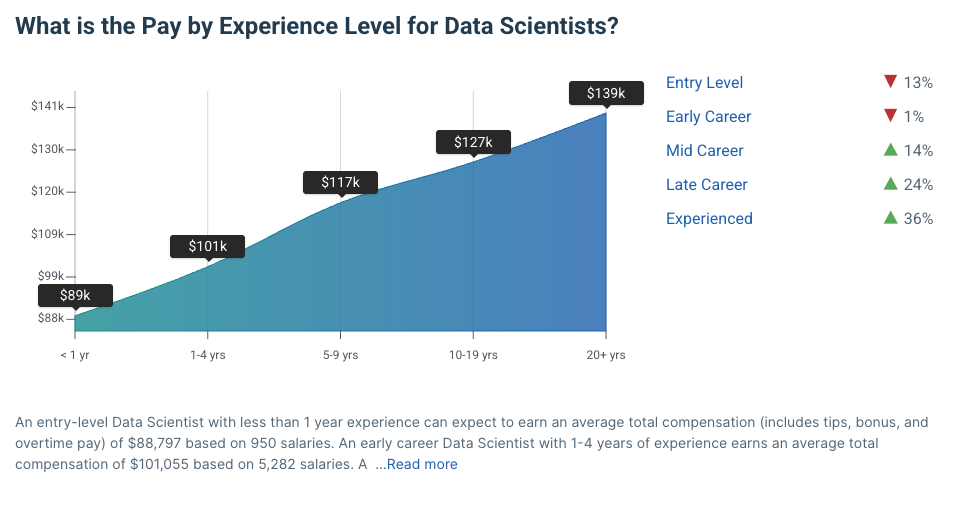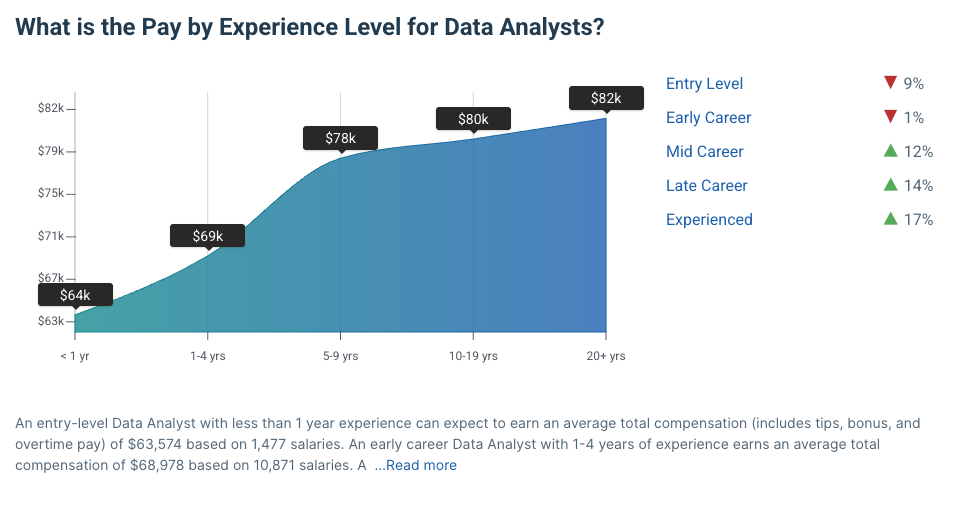Ah, the age-old debate: Data science versus data analytics.
It’s like the Coke versus Pepsi of the tech world, except with fewer sugar highs and more Python scripts. Now, don’t get me wrong, both fields are like fraternal twins in the sprawling family of data.
They share the same DNA—numbers, algorithms, and a borderline obsessive relationship with spreadsheets.
But, oh boy, are they different creatures when you get to know them.
You see, data science is the Renaissance man of the data universe. It’s got its fingers in every pie, from machine learning to data visualization, and it’s always up for a good challenge.
Data analytics, on the other hand, is your reliable, no-frills friend who’s really good at one thing: making sense of numbers so your business doesn’t go belly-up.
So, how do these two stack up against each other? Well, that’s what we’re here to dissect, like a high school biology experiment but with less formaldehyde and more SQL queries.
Buckle up, because we’re about to dive deep into the labyrinthine world of data analytics and data science. And trust me, it’s a ride you won’t want to miss.
Looking for more info while trying to tease out the differences between data science and data analytics, check out these resources:
- How to become a data scientist
- Launching a data analyst career
- Get an online master’s degree in data science
- All about online data analytics master’s programs
Data Science is a Multi-Tool
Data science, the Leonardo da Vinci of the 21st century—master of many trades and a mystery wrapped in an enigma. Or, you know, wrapped in a Jupyter Notebook.
But let’s take a quick trip down memory lane first. Data science isn’t exactly a spring chicken; it’s been around in some form since statisticians first realized they could use math for more than just torturing high school students.
Fast forward to the age of Big Data, and suddenly, everyone and their grandma wanted a piece of the data science pie.
It’s important to note that the rise of Big Data is also really important for the increase attention and need for data scientists and data analysts. Big Data, in its most succinct form, refers to data sets that are too large or complex to be processed by traditional data-processing application software.
The term encompasses data with many entries (rows) that offer greater statistical power and data with higher complexity (more attributes or columns) that may lead to a higher false discovery rate.
Big Data was originally associated with three key concepts: volume, variety, and velocity. A fourth concept, veracity, refers to the quality or insightfulness of the data.
The term is often used to refer to the use of predictive analytics, user behavior analytics, or other advanced data analytics methods that extract value from such large data sets.
So, what is data science? Imagine a Swiss Army knife, but instead of blades and screwdrivers, it’s got machine learning, data mining, and statistical analysis. It’s the art and science of extracting insights, information, and even a bit of wisdom from structured and unstructured data.
It’s not just about number-crunching; it’s about asking the right questions and then using data to answer them.
Here’s a real world example: Netflix uses data science to recommend what you should binge-watch next, because apparently, algorithms know your taste better than you do. Then there’s healthcare, where data science helps predict patient outcomes and even aids in drug discovery.
Ever wonder how self-driving cars don’t crash into every other object? Thank data science and its sophisticated algorithms for that.
So, in essence, these days, data science is pretty much everywhere — it’s like that thing you never knew you needed but now can’t live without. Data science as a field is versatile, it’s powerful, and it’s revolutionizing industries one petabyte at a time.
Here’s a breakdown of salary by experience level, according to PayScale, for professional data scientists.

Data Analytics: Finding Insights
Data analytics, the dependable older sibling in the data family. If data science is the swashbuckling adventurer on a quest of discovery, data analytics is the meticulous planner, the one who actually reads instruction manuals and balances the checkbook.
It’s also important to note that data analytics has been around for a good while, long before “data” became a trendy buzzword. We’re talking about the era when Excel was the hottest game in town and “pivot table” was the secret handshake among number nerds.
So, what’s the deal with data analytics? Well, it’s all about taking raw data and turning it into something you can actually use, like actionable insights.
Think of it as the Marie Kondo of data: it sifts through the clutter, organizes it, and leaves you with only what “sparks joy” (or profits, or efficiency, or whatever metric you’re chasing).
In the real world, data analytics is the unsung hero behind a lot of things you take for granted. You know how supermarkets always seem to know exactly what to put on sale? That’s data analytics at work, optimizing pricing strategies and inventory management.
Or consider sports analytics, where number-crunching helps teams draft the right players and even decide when to take that crucial timeout. And let’s not forget the financial sector, where data analytics helps banks detect fraudulent activities before you even realize you’ve lost your credit card.
In a nutshell, data analytics is the reliable, steady hand guiding everything from business decisions to your next online purchase. It might not have the flashy toolkit that data science boasts, but it’s got a laser focus on solving specific problems—and doing it exceptionally well.
Here’s a quick breakdown of what the earnings for data analysts looks like, according to PayScale.

Comparing Data Science and Data Analytics
Alright, let’s get into the nitty-gritty of Data Science vs. Data Analytics. It’s like comparing a Swiss Army knife to a scalpel—both are tools, both are sharp, but they’re used for different things.
Similarities: The Common Ground
First off, let’s talk about what makes them siblings rather than distant cousins. Both fields deal with data—lots of it. They’re both concerned with turning this data into something useful.
They both employ statistical methods, require a certain level of programming know-how, and let’s be honest, both have job titles that make you sound really smart at dinner parties.
Differences: The Devil’s in the Details
Now, onto the differences, which are more than just semantic. Data science is the jack-of-all-trades. It’s about exploring large amounts of both raw and structured data to find connections and insights.
It’s not just about answering questions; it’s about finding which questions to ask in the first place. Data Science is like the explorer traipsing through the jungle to see what they might uncover. It’s used in a broad range of applications from AI and machine learning to corporate analytics.
Data analytics, on the other hand, has a narrower focus. It’s about capturing, processing, and organizing data to find solutions to specific problems. It’s the explorer with a map and a fixed destination.
Data analytics is used when there’s already a hypothesis or a business strategy in place. It’s more about immediate problem-solving and is commonly found in sectors like healthcare, finance, and energy management.
The Interplay Between Data Science and Data Analytics
Here’s where it gets interesting. Data science can be considered the base of any data analytics investigation. It provides the insights and trends, and data analytics takes those to come up with practical applications.
They’re not in competition; they’re two sides of the same coin.
So, whether you’re an explorer without a map or one with a GPS shouting turn-by-turn directions, there’s a place for you in the data world. Choose your adventure wisely.
For a deeper dive, you can check out this source which breaks down the differences and applications of data science and data analytics.
Side-by-Side Overview
| Dimension | Data Science | Data Analytics |
|---|---|---|
| Main focus | Prediction, modeling, experimentation | Describing and explaining what’s happening in the business |
| Typical questions | “What will happen next?” “What if we change X?” | “What happened?” “Why did it happen?” |
| Data types | Structured + unstructured (text, images, logs, etc.) | Mostly structured (tables, reports, metrics) |
| Core tools | Python/R, ML frameworks, Spark, cloud ML, Git | SQL, Excel, Tableau/Power BI, basic Python/R |
| Typical outputs | Models, APIs, scoring pipelines, experiments | Dashboards, reports, KPI deep-dives, recommendations |
| Education level | Often master’s or strong math/CS/stats background | Often bachelor’s in business, stats, econ, IS, or similar |
| Common job titles | Data Scientist, ML Engineer, Applied Scientist | Data Analyst, BI Analyst, Product/Marketing Analyst |
Conclusion
Data Science and Data Analytics are related fields that work together. Companies typically require both Data Science to explore new opportunities and Data Analytics to put solutions into action.
Whether you’re interested in the innovative process of developing models or the exactness of addressing business challenges, both areas present rewarding prospects in the data-driven era.
Frequently Asked Questions
The main difference is scope and purpose. Data science is about exploration and asking the right questions, whereas data analytics is about answering specific questions to solve immediate problems. It’s like the difference between a philosopher and a detective. One ponders the meaning of life; the other finds out who stole the cookies from the cookie jar.
Yes, but to different extents. Data science often requires a deeper understanding of programming languages like Python or R, especially if you’re diving into machine learning. Data analytics also involves programming but may not require as much depth. Knowing SQL and basic Python could get you pretty far.
Ah, the million-dollar question—sometimes literally. Data scientists generally command higher salaries due to the broader range of skills required. However, specialized Data analysts in high-demand sectors can also pull in a pretty penny.
Absolutely, you can switch, but it’s not like changing your socks. Transitioning from data analytics to data science might require you to learn more about machine learning, data engineering, and advanced statistical methods. Going the other way, you might need to focus more on business acumen and specific industry knowledge.
“Better” is subjective here. Data science offers a broader range of career paths due to its expansive nature—you could go into anything from AI research to becoming a chief data officer. Data analytics, while more specialized, offers deep expertise in specific sectors, making you invaluable in those areas.
There’s overlap, sure. Both fields use statistical software and programming languages like R and Python. However, Data scientists might also use machine learning frameworks like TensorFlow, while Data analysts might spend more time with Excel spreadsheets and Tableau for data visualization.
While many professionals in both fields have advanced degrees, it’s not a hard-and-fast rule. Certifications, bootcamps, and good old-fashioned experience can also get your foot in the door.
So, there you have it, the FAQs that’ll make you the life of the party—or at least the go-to person when someone can’t tell their Data Science from their Data Analytics.